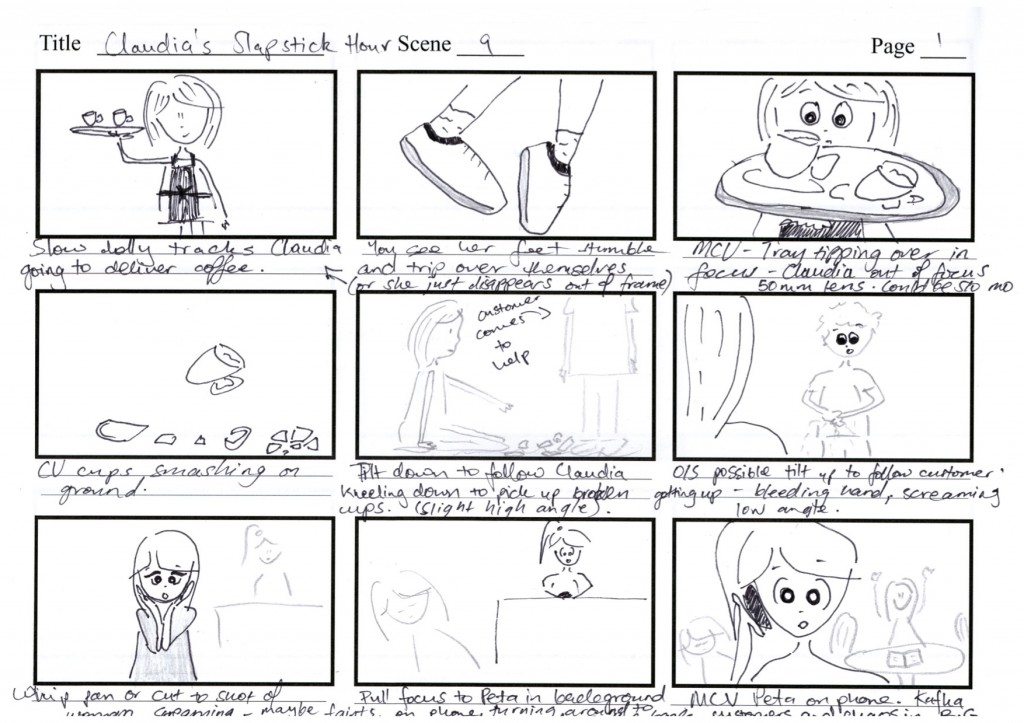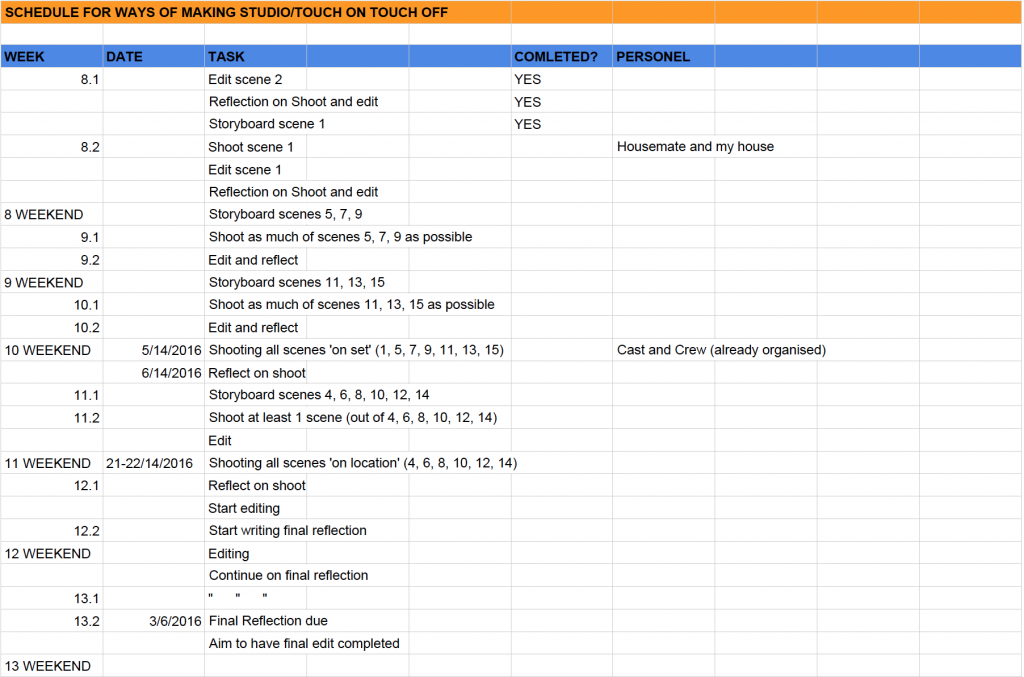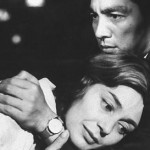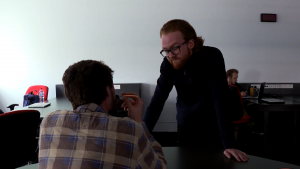Last weekend I did a test shoot for (parts of) scenes 5, 7 and 9 of Touch On/Touch Off. I chose to do these ones first because I will be DoPing them on the first shoot day for the film: May 14th. For this reason all of the scenes that are set at the cafe or indoors (i.e. ‘on set’) will be test shot before any of the location scenes (aside from scenes 2 and 3 which I have already done). Because the actors were not available to me, and because the set has not been built yet, I decided to just do the test shoots at my family home with my father playing Peta, my mother playing Claudia and my sister playing the ‘customer’.
Scripts:
Storyboards:
Scene 5
I am not entirely happy with how this scene worked out. I think this was mainly because my dad wasn’t cooperating ‘on set’ and is admittedly a pretty bad actor. This made it incredibly hard to edit the scene, because none of the dialogue or the gestures were the same in any shots. However, I think with proper actors and a dolly it will work out a lot better. I didn’t have access to a dolly at home unfortunately so I just hand held the camera instead (and that was definitely not effective); my real plan is to slowly track Claudia as she walks into the cafe and then whip pan around to Peta and continue to track forward towards the character to create a sense of intensity. I will need help pulling focus and will also need a grip for this shot to make it work; however, if it doesn’t I will just cut it into two separate shots. I will also need to think of a more interesting way to shoot the last shot of Claudia putting her apron on and beginning to make coffee.
Scene 7
I’ve done three different versions of this scene, because there are so many different ways I could have shot a simple conversation like this. After editing version 1, I realised that the first cut was a little jarring, because both of the first two shots focused on the customer. I found that the editing became much more seamless and the scene made more sense when I cut from the two shot (which really focuses on the customer) to an over the shoulder shot of Claudia the waitress – I felt like it needed more of a ‘back-and-forthness’ between the two characters. As an alternative, I shot the whole scene in one take, pulling focus between each character as they spoke. It was difficult to time the pulling focus with the dialogue (as you can see, most of the focus pulling seems late), but I think with more practise I could have perfected the effect. I’m not sure what cut I like best, so I may amalgamate the two approaches for the final shoot/edit.
Version 1
Version 2
Version 3
Scene 9
I didn’t test shoot a lot of this scene because I couldn’t logistically do most of it with my mum as the actor (she wasn’t willing to fall down) and we didn’t really have any of the props we needed to work with. But nevertheless, I do like this last little sequence I put together. Even though it will kind of be ‘breaking the line’ when cut together with the other shots, I don’t think it is confusing for viewers because of the cut on action – I think it still looks continuous in terms of time and space. Having the character turn around also allows the audience to see the chaos going on in the background of the cafe while Peta is on the phone to the main character George.


















